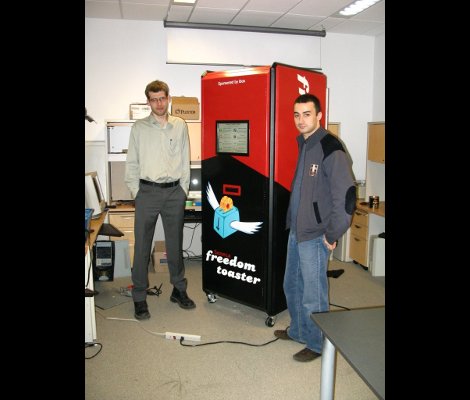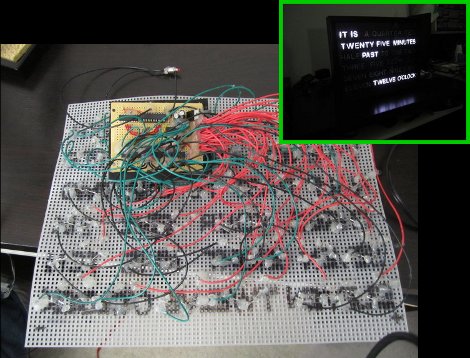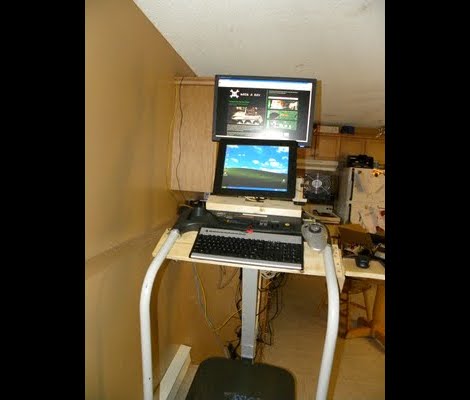
The Seneca College Linux Club figured out a fantastic way to help promote Linux to a wider audience. They took some surplus hardware and made an Open Source software vending machine. That is and isn’t a play on words. The project itself is an open source project, and the goal is to dispense other open source software in the form of CDs and DVDs.
Their build page shares all of the details. They acquired an older server cabinet which was on the way out from the IT department. It’s more than large enough to fit a person inside, which is overkill but it makes it much less likely that someone will try to walk off with the thing. Inside you’ll find a computer, two monitors (one is a touch screen for consumer use, the other is just an extra hidden inside for maintenance.
You must bring your own blank CD-R or DVD-R (but the burning is free). You can see the DVD shelf at waist-level on the fully painted kiosk above. The only thing we think is missing here is a USB port for brewing up a bootable USB stick.
[Thanks MS3FGX]
















